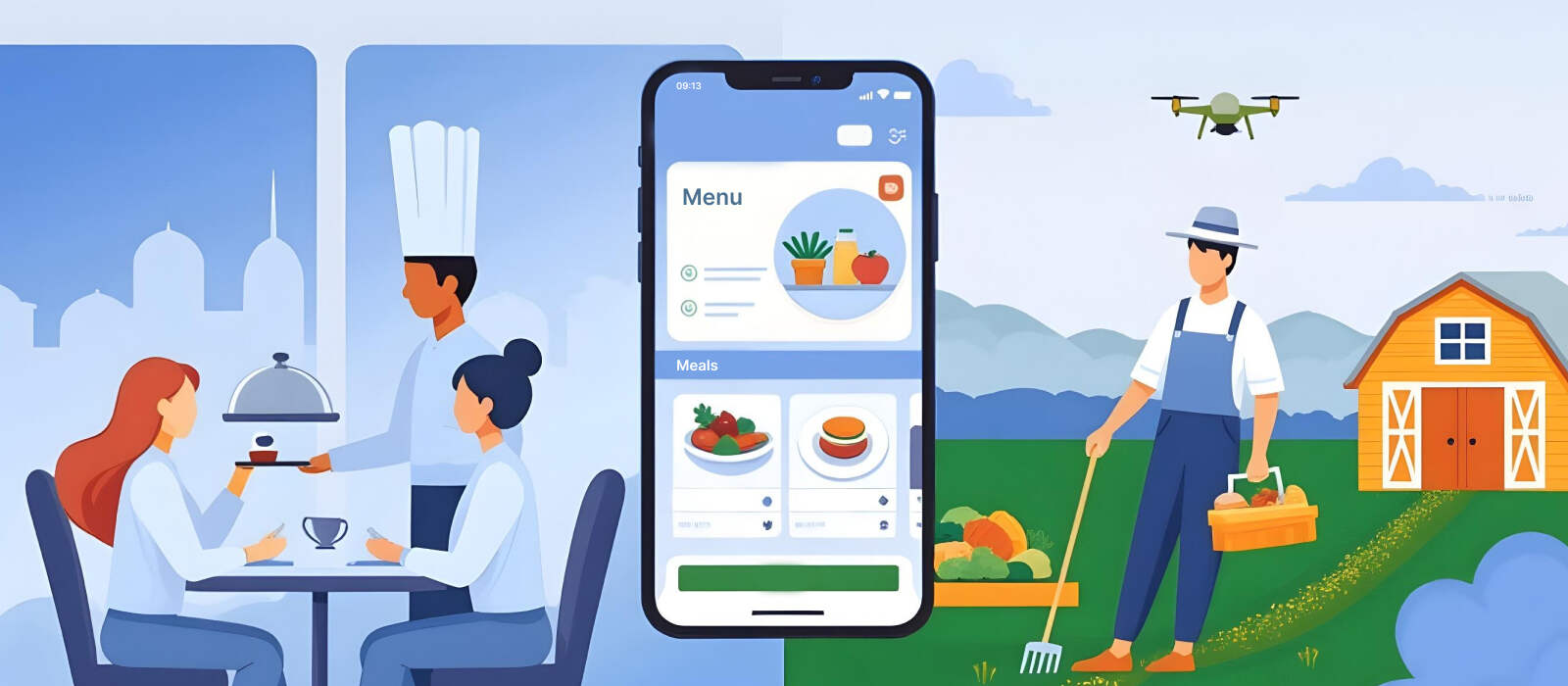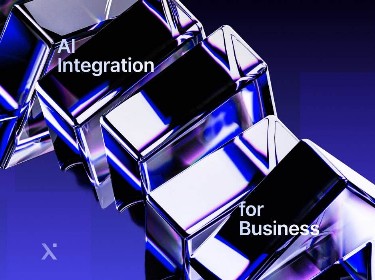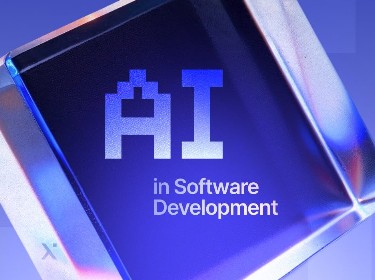Imagine a world with no waiting time for reservations but with personalized restaurant menus and customized grocery shopping experiences. With its numerous applications in food production, packaging, and handling, artificial intelligence (AI) can help us reimagine the food industry and consumer services through streamlining current processes and creating new ones.
Artificial intelligence is a field of computer science that uses machine and deep learning, among other algorithms, to learn from and interpolate data in an attempt to mimic human intelligence. These networks dynamically bind input and output variables to create predictions that can help develop a variety of solutions to simple and complex problems. And while AI is primarily associated with robotics or computer science, its applications span many sectors.
One of AI’s less common uses is in the food industry. According to the United States Department of Agriculture (USDA), food, agriculture, and other related industries contributed $1.109 trillion to the U.S. GDP in 2019. Yet AI is not utilized widely throughout these large sectors. The adoption of artificial intelligence in the food industry is boundless and will drive process efficiencies and customizable experiences. It will undoubtedly have an impact on the economy and daily life.
What’s more, with improvements such as clean packaging and streamlined grocery services, AI will greatly alleviate many health and environmental issues. In short, the widespread implementation of AI in this unusual area has the potential to transform and revolutionize the food industry as we know it.
Maximizing farming yield with AI
The agricultural sector is mainly comprised of individuals and companies that grow crops and raise animals. This sector is largely overlooked, yet it is an integral part of the United States economy, as it provides a stable supply of food for the population and raw materials for the production of goods and services.
AI in farming companies and agriculture
![]()
To aid the crop growing process, data can be collected from sensors, drones, and satellites. Then, by applying artificial intelligence in farming, it is possible to examine the information collected and thereby help farmers make more informed decisions. AI can be utilized in phenotyping to analyze the biomass and characteristics of a plant to determine its ripeness and harvest time.
Let’s consider one case: premature germination of wheat grains caused by high moisture. Previously an image acquisition system and a watershed image processing algorithm were used to classify wheat grain by germination rate. Using images, Smart Information Flow Technologies (SIFT) categorizes the visuals of these images to identify flowering wheat. If this technology is implemented on a large scale, farmers can utilize AI in food manufacturing to control the moisture levels in their field to ensure the best wheat harvest. Rather than applying extensive chemical fertilizers universally throughout fields, sensors can identify where more fertilizer is needed for optimum growth. This will decrease the use of pesticides and minimize soil damage.
Visual imagery technology can also be utilized to mass inspect crops for the detection of disease, which will make for a more efficient and profitable process. Leaf diseases in soybeans were found using computer vision techniques in conjunction with the k-Nearest Neural Network and the Probabilistic Neural Network. Furthermore, aphid detection in wheat was found through the Support Vector Machine, Maximally Stable Extremal Regions, and Histograms of Oriented Gradient Method (SMH Method) which had superior success for aphid detection in comparison to other methods.
AI technology can be further improved to detect the specific causes of these diseases by analyzing the changes in plant biomass and external factors to identify similar patterns between diseased crops. This detection of impurities and pests for crops can help farmers improve their yield overall.
Additionally, the negative effects of pesticides on health and biodiversity can be lessened by applying AI in farming and agriculture. The ripeness of products can be analyzed to see which microbes could increase growth rather than using pesticides. Currently, Gamaya, a Switzerland-based agricultural technology company, is hoping to use drones with hyperspectral cameras to detect potential threats and changes to the water, fertilizer, and pests in fields.
Efficiency can also be increased by using AI and machine learning in robots to organize and pick fruits and vegetables, rather than using human labor. A study published in the journal Engineering Applications of Artificial Intelligence found that using a specialized scheduler and feedback loops to create routes within the plant layout, in combination with data mining from historical performance data, allowed for major speed and quality improvements.
Widespread implementation of these measures would minimize crop harvesting time, and the automation of harvesting crops can better determine the ripeness of fruit and possibly handle the products more carefully. Thus there are multiple applications of AI farming solutions that can assist farmers in making the best decisions to increase crop yield and efficiency.
AI in food transportation
Artificial intelligence can control drones or other modes of transportation to automate delivery services further. This network of efficient transportation will ensure that the product doesn’t spoil and is delivered to the highest priority destinations. By creating artificial neural networks, it will become easier to track goods and alleviate issues with inventory predictions.
Moreover, these tracking systems will allow suppliers and consumers to track exactly where their food originated, making it easier to identify organic produce and cruelty-free items for consumers who value these qualities. As a result, this will not only stabilize costs and make them more predictable, but provide greater transparency between farm suppliers and consumers.
AI in food waste
![]()
Artificial intelligence can also play a role in food waste and help alleviate world hunger. USDA found that 30-40% of the food supply in the United States becomes food waste. According to USDA’s Economic Research Service estimates, 31% of food waste at the retail and consumer levels equated to 133 billion pounds of food in 2010. Meanwhile, it is projected that by 2050 over two billion people will be undernourished globally.
Food waste AI will allow us to understand overproduction and properly allocate the correct resources to meet supply and demand while adapting to various population needs. These technologies can control the amounts of production materials needed in correlation with weather forecasts to create the maximal amount of product needed for distribution.
Besides, a large number of foods are rejected by farmers and suppliers as they don’t meet certain aesthetic criteria. Using a food tracking app with AI, the food from these farmers can be connected directly to food pantries, restaurants, and stores so that these less desired and aesthetically unacceptable crops can be sold before they become waste. AI can sort these crops and implement a different transportation route to ensure its correct delivery.
Artificial intelligence and machine learning, therefore, have many applications through farm fields to create more efficient systems that will not only benefit the economy but also improve the health of consumers, the field, and the world.
Improving food packaging and handling with AI
As the raw food materials move from farms to distribution centers, food packaging and handling play an essential role in ensuring the preservation and accurate representation of foods. Since most foods are sold packaged, AI can help ensure protection and health across the food industry.
Food identification and sorting with AI
Currently, the majority of products are sorted by human labor. Machine learning algorithms can be utilized to correctly identify which items are definitely fruits and vegetables while also detecting anomalies and impurities. This can be determined by measuring the size and shape of each item, its color, and its biological characteristics to identify the type of product and whether it is suitable under certain guidelines. This will improve efficiency and the cost of production for companies, which in turn will increase revenue and lower the cost of food for consumers.
TOMRA, a food sorting company, utilizes Near Infra-Red (NIR) spectroscopy, X-rays, and lasers combined with machine learning to optimize the sorting process. Another firm – a Japanese food company Kewpie Corporation – detects anomalies in their potatoes using AI.
As technology improves, it can potentially work with a greater variety of fruits and vegetables and sort products based on their shape and composition for different processing purposes. Additionally, with current health concerns during the COVID-19 pandemic, AI reduces the risk of human contamination during sorting.
AI in food packaging
Artificial intelligence can help with the product development of food and beverages by identifying the most profitable and eco-friendly packaging for foodstuffs. There are some limitations with packaging due to the effect it might have on foods. Specific inks for printing, for instance, cannot be used in packaging for some high-fat foods such as cheese due to chemical contamination. Great care must be taken in the production of glass and plastic packaging to ensure no contamination or deformation that might impact the food. Glass specifically must also have proper coatings.
Utilizing neural networks, fuzzy logic, and genetic algorithms, the packaging process can be adapted to find the best materials to adhere to these guidelines and reduce costs. Additionally, visual sensors can find the best way to package food to minimize the surface area of plastic needed to cover products with abnormal shapes.
AI and equipment cleaning
Equipment has to be cleaned frequently throughout the food packaging and handling process, which is a quite resource-intensive procedure. The University of Nottingham has developed a system that applies Self-Optimizing-Clean-In-Place (SOCIP) to improve the use of cleaning resources by as much as 20-40%. They utilize ultrasonic sensing and optical fluorescence imaging to detect microbial debris in the equipment and provide a ‘deeper clean’.
Currently, this process is built for ‘worst-case scenario’ cleanings, which oftentimes result in overcleaning. As agriculture artificial intelligence continues to improve, the extent and amount of cleaning can be reduced or altered based on how dirty the equipment is. This would save energy and cleaning chemicals while also minimizing recalls, outbreaks, and food contamination.
AI and fraudulent food
![]()
Numerous cases of food fraud could be stopped and prevented through artificial intelligence. The most widespread cases of fraudulent food involve fish and seafood (20.6%), meat (13.4%), and fruits and vegetables (10.4%).
Adulteration, for example, is commonly where a fraudulent component is added to the final product, such as melamine added to milk. This can be stopped when conducting quality assurance tests on the packaging and handling process by using AI to check for possible changes in additives.
Other foods, such as honey and fish, would also benefit from artificial intelligence implementation. Currently, honey is the third most faked food in the world. A recent study from Cornell University found that machine learning augmented microscopy can help identify this fraudulent honey, which will prevent its spread.
Fish fraud, in turn, is the act of deceptively mislabeling the type of fish, and it occurs in about 30% of the fish market. Artificial intelligence can identify the fish through its physical traits such as the geometry of the fish head, mouth and fins, its chemical and DNA structure.
The Wageningen Data Competence Center utilized machine learning, specifically the Bayesian Network (BN), to generate better data for the classification of foods. These BN models predicted the contamination levels of foods with 90% accuracy. Other research published in Food Research International found that BN networks have a predictive accuracy of 91.5% for fraudulent foods.
Other cases of fraudulent food can be detected during the packaging process with IBM’s electronic, AI-assisted tongue known as Hypertaste. Utilizing ‘combinational sensing’, this technology uses various chemical sensors to conduct a holistic analysis of the product rather than identifying individual chemicals, creating a ‘liquid fingerprint’. The machine learning algorithm helps match this liquid fingerprint to other known liquids in the database.
Such testing is a viable option due to its efficiency (with less than a minute’s processing time) and accessibility (it can be available on mobile phones). With the implementation of Hypertaste and other AI in food inspection, counterfeits will be easier to detect and hopefully end its widespread use.
A decrease in fraudulent foods will not only help the economy but also ensure the safety and health of those with allergies and dietary restrictions.
AI and customizing food service
As food moves from the production line into the mouths of consumers, artificial intelligence can play a major role in enabling restaurants to better meet consumer needs. The foodservice industry comprises 2.1% of the United States GDP in 2016. Thus, improvements to the quality of service and customer satisfaction in the foodservice industry would help the growth of the United States economy as well as small businesses. Positive changes can be made by using artificial intelligence in the restaurant industry.
Minimizing safety concerns with AI
During this global pandemic, it is more important than ever to ensure the safety of restaurant staff and customers when considering food service. AI can detect whether restaurant workers are wearing personal protective equipment properly and are adhering to food safety regulations. This will not only protect visitors but also staff.
A Chinese company KanKan AI, for instance, utilizes camera monitors to detect waitstaff faces and the equipment that they are wearing. This technology is estimated to have a 95% accuracy rate for detecting health code violations. Additionally, health concerns can be minimized through food sensors to detect any cross-contamination.
TellSpec, an AI scanner, utilizes a food sensor to analyze the molecular aspects of food. This technology not only calculates and shares the nutritional value of food but also helps identify specific allergens. With the implementation of this type of technology, we have every chance of decreasing food poisoning and the spread of disease.
Furthermore, AI-driven robots can also help within the kitchen environment to assist with cooking by using sensors and cameras. This can help lower the chance of food contamination. Miso Robotics, for example, is a kitchen assistant known as “Flippy”, and uses AI and robotics to flip burgers. This was eventually implemented by CaliBurger, a fast-food chain. Hopefully, in the future, this technology will be used much more commonly.
AI and delivery
With the increase of take-out and delivery options due to social distancing guidelines, it is reasonable to consider AI’s role in the delivery process. Halla, a personalized restaurant, created an app that matches customers with entrees to make food delivery more convenient. Artificial intelligence can help maximize delivery routes for take-out only restaurants, minimizing pollution and fuel expenses while ensuring quick delivery times.
Utilizing a database containing 21 million dishes, Halla creates recommendations using artificial intelligence to better serve their customers. Creating more streamlined processes will improve customer satisfaction, reduce CO2 emissions, increase profits, and preserve the health and safety of delivery drivers by minimizing their contact with people on their route.
AI for menu and recipe customization
![]()
Artificial intelligence techniques can also be implemented in restaurants, especially chains such as Applebee’s, to determine the best combination of appetizers, entrees, and desserts at certain price points or promotions at different times of the year. This will help make customized marketing, menus, and sales strategies become more tailored to the general consumer population.
AI is also able to contribute to the creation of new recipes. Gastrograph AI uses machine learning to predict consumer food and beverage preferences by understanding the human perception of flavor.
Thanks to AI, a large company such as Coca-Cola found out that the majority of customers mixed sprite and cherry-flavored sodas at their self-serving fountains. As a result, Coca-Cola created a new product, Cherry Sprite.
Similar efforts could be made refining the menus and recipes of restaurants to fit their demographic through current data and consumer preferences. A flavor analytics company DishQ (rebranded as Spoonshot), for example, has used AI to create a “food brain” to provide recommendations for restaurant menus.
Find out what this AI shopping app has to offer and consider how this case applies to your business
AI and restaurant search and reservations
Artificial intelligence is able to become a customer’s assistant when choosing restaurants. Rather than relying on Google Maps and Yelp reviews, AI can utilize data from online orders, food deliveries, online reservations, and personal tastes to recommend local establishments that would best suit the consumer’s needs and price range.
AI can also be used to book reservation spots and lower waiting times based on average dining, service, and clean-up times for particular meals and numbers of people. Using an informed feedback loop, data mining, and machine learning, systems can predict if certain tables will finish faster than others based on the entrees ordered and the number of people. Rather than making reservations in 30-minute increments and having guests waiting at the door, reservations can be handled more efficiently. Technology also alerts users to how much time they have before their table is ready, taking into account the behavior of previous guests (the speed of their eating and conversation flow, and the time of food delivery).
AI and self-serving systems
For establishments that don’t specialize in sit-down dining, many have implemented self-service kiosks to take customer orders. With this technology, customer waiting times are reduced and orders are more accurate. AI can enhance this process by providing recommendations of most commonly ordered dishes or popular food pairings and sauces.
Facial recognition can help distinguish regular customers and utilize personalized orders for a streamlined experience. KFC, for example, has tested face-scanning technology and AI to predict what a customer will want to order based on their sex, age, and facial expression. This has the potential to reduce waiting, as people often spend a lot of time studying the menu before making a choice.
Similar to Coca-Cola’s use of AI and self-serving machines, these self-serve stations can also provide another data point for establishments to predict their consumers’ desires, and thus further improve AI systems.
AI for small businesses
Small businesses can utilize machine learning to make informed financial decisions and plan for future operations. It is said that 60% of restaurants fail within their first year and 80% within five years. Furthermore, according to the IBISWorld report, the average profit margin for a single location full-service restaurant is only 6.2%. Sales predictions can help small businesses tailor the number of food supplies to order and optimize the amount of staff working at certain times.
It is estimated that 32.5% of restaurant costs come from purchasing food and beverages. Since these costs often fluctuate and quantities are hard to estimate, artificial intelligence can help reduce this expense by providing customized plans for when and where business owners should purchase supplies. This can help save many small businesses from prematurely failing by increasing their profit margins.
Reimagining everyday food with AI
Beyond the foodservice industry, food plays a major role in the daily lives of Americans from grocery shopping to food storage. Artificial intelligence is capable of transforming this landscape into an automated and personalized experience.
AI in grocery shopping
![]()
Grocery shopping is something familiar to everyone, and it is an essential part of our daily lives. With growing concerns for the safety of patrons and workers during this pandemic, artificial intelligence can help enormously by enabling personalized grocery shopping and reducing time spent at the supermarket.
Personalized shopping can be curated by a network of data to cut down shopping time by grouping together commonly purchased items for consumers in the store. Similarly, robots can put together recommended ‘baskets’ of food for shoppers to easily purchase upon arrival, based on previous purchase preferences. For instance, Instacart utilized deep learning to sort shopping carts and used AI and machine learning, representation learning, and image similarity search to recommend items to customers as they shopped.
Additionally, peak shopping times can be identified to minimize traffic within grocery stores. Instacart developed machine learning to predict the distribution of shoppers’ visits and the number of delivery orders. Finding the best time for grocery shopping is especially important for the elderly and immunocompromised, in order to minimize human interaction and health concerns during this time, and to comply with social distancing orders.
With artificial intelligence, grocery stores can develop their business by creating personalized advertisements for consumers. Whisk is a company that uses deep learning and natural language processing to analyze food ingredients and properties to create purchase options. Rather than sending out mass coupon fliers, for example, particular coupons can be sent to different consumers to entice them to specific supermarkets based on their diet preferences.
Learn about this AI solution that will help you analyze consumer behavior
AI and instant food delivery
Shopping is increasingly being done online and many companies now specialize in at-home cooking subscription boxes or other niche services. This area of the food industry also has the capability to personalize food selections and combinations with the help of artificial intelligence.
HelloFresh, for example, delivers ingredients for specific recipes. With the help of artificial intelligence, they could bypass the user selection process for which dishes to cook, and the service can become streamlined with an automatic selection process and subscription service providing different recipes for the individual, partners, or families consuming the meal.
These food delivery services can also implement artificial intelligence personal chefs to assist with recipes and cooking. IBM created Chef Watson, an AI culinary research assistant that helps to create dish combinations. The users choose the ingredients and style of cooking and the technology combines the user’s preferences and cooking style to provide a detailed recipe. As technology continues to improve, this personal assistant chef can operate in homes across the country, and again can provide another data point for food customization and machine learning.
AI and food storage
Storage is another element of food shopping and delivery, as many Americans buy their groceries in bulk for the week or month. The United States Environmental Protection Agency (USEPA) found that in 2010, 218.9 pounds of food per person was thrown away. This can be alleviated with the help of AI to alert people when their food will likely become spoiled.
A study found that a combination of radial basis function (RBF) neural network and a genetic algorithm (GA) were the best artificial intelligence technologies to create time series forecasting models for perishable food. This same research and methodology can hopefully be applied to the average American consumer to prevent the current abundance of food waste. This would contribute to the USDA and USEPA’s goal of cutting the nation’s food waste by 50% by 2030.
Research has also been conducted to illustrate the effectiveness of electronic noses to monitor the food quality of meat, milk, fish, tea, coffee, and wines. Milk, for example, hosts bacterial growth leading to its spoilage which creates an aroma and physical changes. Artificial intelligence can observe the increase in bacteria and change of chemical composition using polymer sensors.
Through a study published in the Canadian Journal on Artificial Intelligence, a neural network helped to develop a computer system that could detect the shelf life of milk cakes. This same neural network can be expanded to determine the shelf life of other food and beverages such as instant coffee.
In addition, sensors that control the temperature and humidity of the refrigerator can be automated by AI to reduce energy usage when there are fewer items. Power to the refrigerator can also be reduced by altering the temperature at which it operates to fit the needs of the product inside, as some items need to be refrigerated at colder or warmer temperatures.
AI in health and wellness
![]()
There is also a multitude of applications for artificial intelligence in the health and wellness sectors. Edamam, for example, helps provide nutrition analysis for businesses and consumers from unstructured text submissions. Mobile apps utilize AI to remind busy individuals to eat at certain times of the day based on their hunger patterns or provide nutritional advice and suggestions based on their body type and fitness goals.
Foodpairing, an AI food company, utilizes food preferences to change people’s dietary habits by offering healthy alternatives that still taste ‘good’. Their flavor technology makes use of a large flavor database and machine learning to combine unexpected foods.
A study from Cornell University formed food recommendations based on user history, ingredients, and descriptive images of recipes. A neural network was created to find out what similar users tended to eat, users’ preferences for ingredients, and opinions of certain visual images. This neural network can be implemented into mobile apps or programs such as Weight Watchers to enhance user experience and broaden their diet.
This can also be taken further to prevent or help to treat eating disorders. According to the National Eating Disorders Association, 9% of the US population, or 28.8 million Americans have an eating disorder at some point in their lives. Worldwide, eating disorders affect at least 9% of the population.
Nutritionists and AI can work together to best provide help to those with various kinds of eating disorders such as bulimia or anorexia, based on their food-logging habits. If one user is identified as having an eating disorder, users with similar eating habits and patterns can be found using artificial intelligence.
Conclusion
Although artificial intelligence is not widespread across the food industry and consumers’ daily lives, in years to come, the implementation of this technology could transform the entire journey of food. Yet with its massive benefits, it is also important to proceed with caution as extensive use can lead to data security breaches and AI safety concerns.
As these various innovations are slowly implemented, safety protocols and data protection measures will hopefully follow. With its untapped potential, AI is sure to disrupt and transform the food industry as we know it – but for the better.
If you already have ideas on what AI solutions your company can implement to enhance your business performance and improve the food industry overall, share your concept with a competent AI development firm. Professional developers will analyze the feasibility of your idea and bring it to life in the best way possible.




